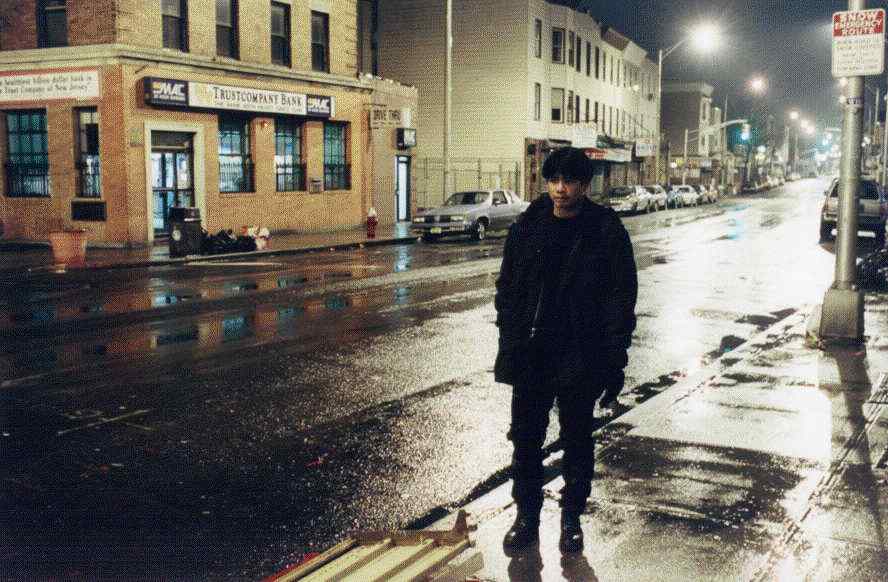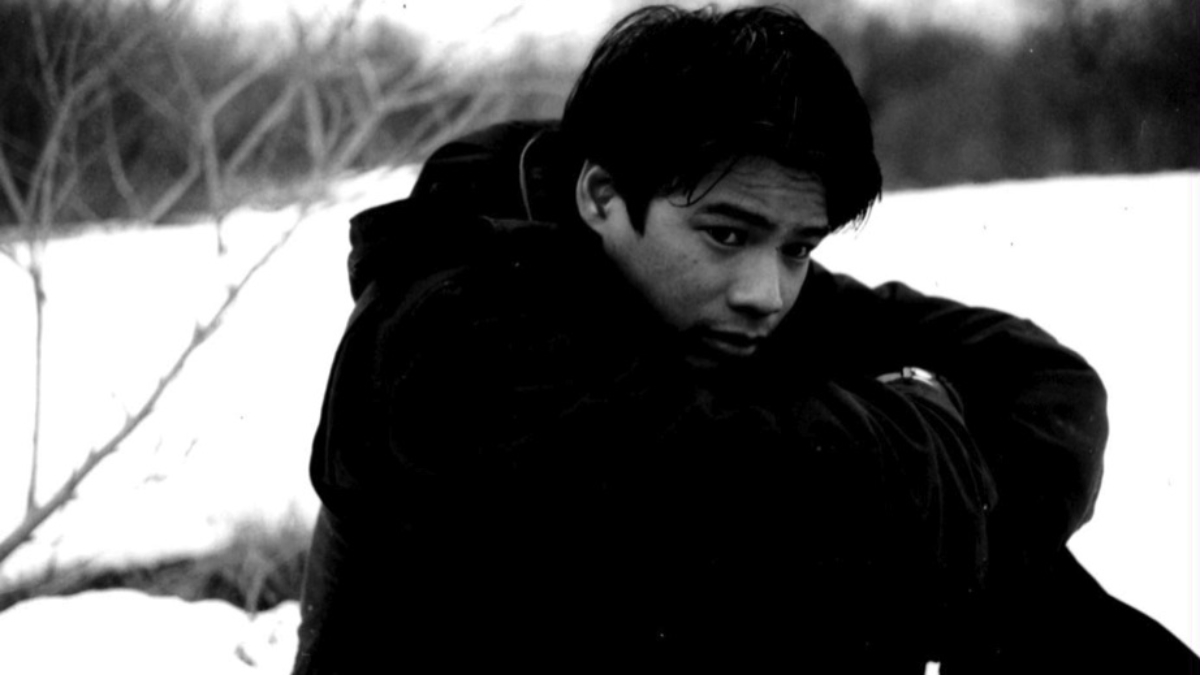CV: In conjunction with the screening of the preserved version of BATANG WEST SIDE (2001) by Lav Diaz, we post up the interview between the then-ACV-acting-executive director Angel Velasco Shaw and Lav Diaz prior the film’s screening at AAIFF’01 as the Centerpiece of that year. The restored version of BATANG WEST SIDE is playing at MoMA on Nov 9. Check out the schedule HERE.
“One of the most original voices of contemporary cinema, Filipino writer-director Lav Diaz made his first true masterpiece—the slow-burning, unforgettable crime drama Batang West Side—in 2001, but it has remained out of circulation for years except in bowdlerized form. Today, thanks to a beautiful preservation by the Austrian Film Museum, we are able to rediscover Diaz’s original cut and recognize it as a haunting companion piece to his most recent feature, Norte, the End of History, which was a highlight of this year’s Cannes and New York film festivals. A boy is found murdered on the streets of Jersey City, where Filipino-American teenagers make sense of their lives, or find a means of escape, by fighting in gangs and trafficking in “shabu” (crystal meth). In piecing together the boy’s past through interviews with family and friends, the detective assigned to the case uncovers haunted memories of his own. The subtly devastating Batang West Side evokes the spiritual crisis that afflicts the Filipino diaspora community, with its simmering sense of collective guilt, brooding isolation, and pent-up rage. ” — The Museum of Modern Art

Still of BATANG WEST SIDE. Courtesy of MoMA Press Office.
An Artist’s Prerogative: Excerpts from a Conversation with Lav Diaz
by Angel Velasco Shaw
Published in the 25th AAIFF Program Book CineVue Special Edition, pages 60-61, 65
Angel Shaw: What inspired you to make films?
Lav Diaz: It’s a passion. I grew up watching films. My father is a film maniac. He used to bring us to this theater in Cotabato. (A city in the southern island of Mindanao.) We lived in a barrio in the middle of the forest. Every weekend he would bring us to this town, two hour’s drive from our barrio. We would watch all the films there. Double programs, four theaters, for two days. We’d be sleeping in the bus station. That’s how my father introduced me to film.
AS: What kinds of films were they?
LD: Eclectic… There were Filipino films, Chinese films … you’d be surprised! I remember watching a lot of Kurosawa there. I saw Aguirre the Wrath of God as a double program with Nora Aunor and Fernando Poe. (Two superstars in the Philippines film industry.)
AS: After you started making short films in 1986, what were you doing in the Philippines?
LD: I was writing for TV, the Drama Anthology on Channel 4, and then Batibot, a children’s show on Channel 9. Before I left for the States in 1992, I made two screenplays for the commercial mainstream.
AS: Obviously you didn’t like something because you became an independent filmmaker.
LD: I won this scriptwriting award conducted by the film academy. Because of that award, Fernando Poe, Jr., the action king, invited me to write a script with two other guys. we wrote some scripts for him and he shot one called Good Friend, Bad Enemy in English. The Regal Films asked me to write another one. I couldn’t take it anymore. I became a typewriter not a writer because they dictate what you will do. You write this, you write this. I can’t function that way. So I left.
AS: So is that ultimately what made you come here?
LD: No. I was doing this documentary, a multimedia tour about street kids in the Philippines. It was a commissioned work and somebody invited me to show it here. That’s how I got to LA and finally New York. It was an accident.
AS: There are very few filmmakers who have been able to work in their home country and work abroad. are there differences?
LD: Coming to New York, it’s finally a different perspective. The energy’s different. The independents, they keep moving. Of course, it’s a different condition. There are privileges that you cannot get in the Philippines. It’s more of the marginalized character of the place that’s really a problem among the independents there. Aesthetically, you cannot really move in the Philippines. It’s a problem. So New York has given me that kind of freedom, that perspective. The drive.
When I got back to Manila, I knew that I could do things. I have that New York attitude now. “I can do things,” that’s what I’m telling them. They said, “Before, you keep complaining, why are you doing these things now?” It’s New York, man.
AS: What inspired you to make Batang West Side?
LD: My own experience, coming and living here for five years without my family – the loneliness, the isolation, the desolation. artistically, I was moving forward, [but] the contradiction, family and art … The Philippine experience becomes clearer to you when you go outside the Philippines. I see that Batang West Side is basically my experience looking at the Philippines and looking at my condition and experience here I always wanted to see a film that will show the Philippine experience, not just here.
AS: For me, what you show in Batang West Side is not just the Filipino;s struggle here, its’ also the struggle of an American-born Filipino. Would you agree?
LD: Yeah.
AS: Were you actually living in Jersey City?
LD: I lived there for almost three years, so I know the place. Eighty percent of the characters are real. I based it on real characters.
AS: Your film is really the first film that I’ve seen that I feel has made a lot of breakthroughs. I think it’s really good writing, and you seem to have married, blended the experiences of Filipino Americans and the Filipinos who live in America. Do your audiences in the Philippines have a sense of that?
LD: There is a group who is resenting the work actually … They say that’s not the real Filipino experience in America. They just didn’t get it. Anyway, there are tabloid writers … until today, they keep doing that … but generally the people who saw it, especially the critics, like it. Although, in the industry, there is that resentment – especially with the length.
AS: Why is the film five hours?
LD: It’s organic. I let the work grow by itself. I didn’t manipulate it. I just kept putting things together.
AS: Why didn’t you want to cut it?
LD: I didn’t want to cut a single part of it because if you take out one frame form the film, it’s gone. I didn’t want to do that. I studied the film, watched it so many times before I decided on the five hours. They [the producers] wanted to kill me… again it’s commerce versus aesthetics. Batang West Side is an aesthetic stand.
AS: What do ou hope to gain from screening Batang West Side in our film festival?
LD: I’m glad that Filipino Americans are going to watch it … especially the Jersey City people. filipino Americans … Filipinos all over the world. I want them to understand our struggle.
AS: What about our struggle? what is our struggle?
LD: We have to examine our history – more than 300 years of Spanish colonization, almost one hundred years of American intervention, four years of Japanese reign, more than twenty years of Marcos terrorism – all these things destroyed our culture, our psyche. We have to examine that. We have to look back.
Batang West Side is that. It is am examination of our past, our future – a collective canvas of what we are as a people, as a nation. We have to question things like, “Why are there 400,000 Filipinos in Italy working man? Why are there four million Filipinos in America working their butts off, man? Sex slaves in Australia? Domestic helpers in the Middle East? We have to examine these things so that we can understand what’s happening to our nation. That’s Batang West Side.”
AS: If you could say anything you wanted to say to a young aspiring Filipino or Filipino American filmmaker, what would it be?
LD: Make films about the Philippine, the Filipino experience. We have that responsibility as artists. The Filipino aesthetic is the Filipino struggle. We have to do that, whether you’re a painter, a filmmaker, a musician, you have that responsibility to our country, given these conditions. The Philippines is really a battered country. We have to build it us again, whoever you are, Filipino American or Italian Filipino. You have to help the country through your work, if you’re an artist.

